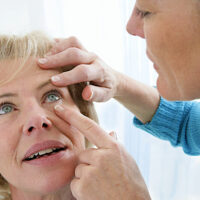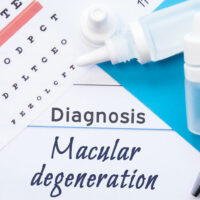8 mistakes to avoid when looking for senior living apartments

Looking for senior living facilities can be challenging and time-consuming. That said, it’s important not to rush the process and move into a facility that does not cater to one’s needs. Choosing a facility far removed from what one wants can result in poor living experiences, and one might want to move to another location, which could be expensive. So, here are some mistakes one should avoid when selecting a senior assisted living facility.
1. Rushing the decision
One of the biggest mistakes seniors or caregivers can make is not doing thorough research. Doing so could result in paying more out-of-pocket costs for premiums and signing up for facilities one does not require. One should ensure they take their time when selecting a senior living facility. One should also start the search early, giving them ample time to speak with property managers and staff to understand their assistive living options.
2. Not knowing one’s needs
While looking for a senior living home in advance is essential, one should not do so without knowing what they want. This includes deciding the neighborhood preferences, amenities one wants, rent one can afford or is willing to pay, and unit area. One should also determine other factors, such as the transportation options in the vicinity and whether they need a fully furnished apartment. Knowing what one wants can help one get the most value for money when selecting an apartment.
3. Failing to look into the kind of care provided
Each senior living facility and its respective apartments are different. Therefore, one should never assume that the level of care in two locations will be similar. The facilities usually range from independent living communities for active seniors to assisted living communities with different degrees of available care. There are a couple of facilities that specialize in memory care, which includes intensive, specialized care for those with memory issues . One should note that various types of communities, apartments, and amenities are made available to residents depending on the services they pay for. Therefore, seniors must determine the level of care required before selecting a living facility.
4. Failing to read online reviews
Most living facilities have a website wherein caregivers, people living in such apartments, or those who have lived there in the past put up reviews about their experiences in the community. Ignoring these reviews is not the best idea. Reading them can help one ascertain the benefits and caveats of each living facility. This can also help determine if the staff and other amenities are as per the description. Apart from the community’s website, one can also find reviews on third-party sites.
5. Not setting a price point
When renting a facility, one should decide how much they want to or can pay. Not doing so could result in one paying way above their means or spending too little when they can take advantage of certain services to help them lead a comfortable life. Some senior apartments are budget-friendly, while others are expensive and curated for those who desire premium amenities and services. So, it is crucial for one to establish a realistic budget based on the resources available to them and to avoid financial stress. Individuals should also learn more about other financial resources for their apartment, such as long-term care insurance or the Aid and Attendance benefit for veterans and their spouses.
6. Vetting only the website
A senior living community’s website may have the most creative design, with all its amenities positioned attractively for potential clients. However, some things and services listed on the website might be unavailable when the individual moves into a new place. Therefore, one should ensure they physically visit their final list of senior living facilities and the respective apartments before selecting one. Visiting the establishment could ensure one can try the amenities, meet staff and residents, and taste the food, all of which help determine if the place is the ideal fit. For seniors who cannot physically visit the facility, the establishment offers virtual tours that could give them a real-time experience of the place. Some virtual tours also allow seniors and their family members to ask staff questions about the living arrangements and services provided.
7. Not considering emergency requirements
People who look for assistive living apartments might choose one based just on a convenient location and available amenities. However, they should also consider any emergency requirements. Several senior living establishments do not have any emergency care services. So, if one requires urgent care, the individual may have to rush to a nearby hospital. So, one should look for places with a healthcare center on the premises for emergencies or if the place is located close to one.
8. Not speaking to a family advisor
Renting an apartment at a senior living facility takes a lot of work. So, if one cannot decide where to stay, one could always speak to a family advisor. They are well-versed in senior care and could offer multiple resources to help seniors find suitable places to live in. Moreover, some companies catering to senior care may also offer family advisor services for free and help seniors navigate benefits, such as veteran benefits.





